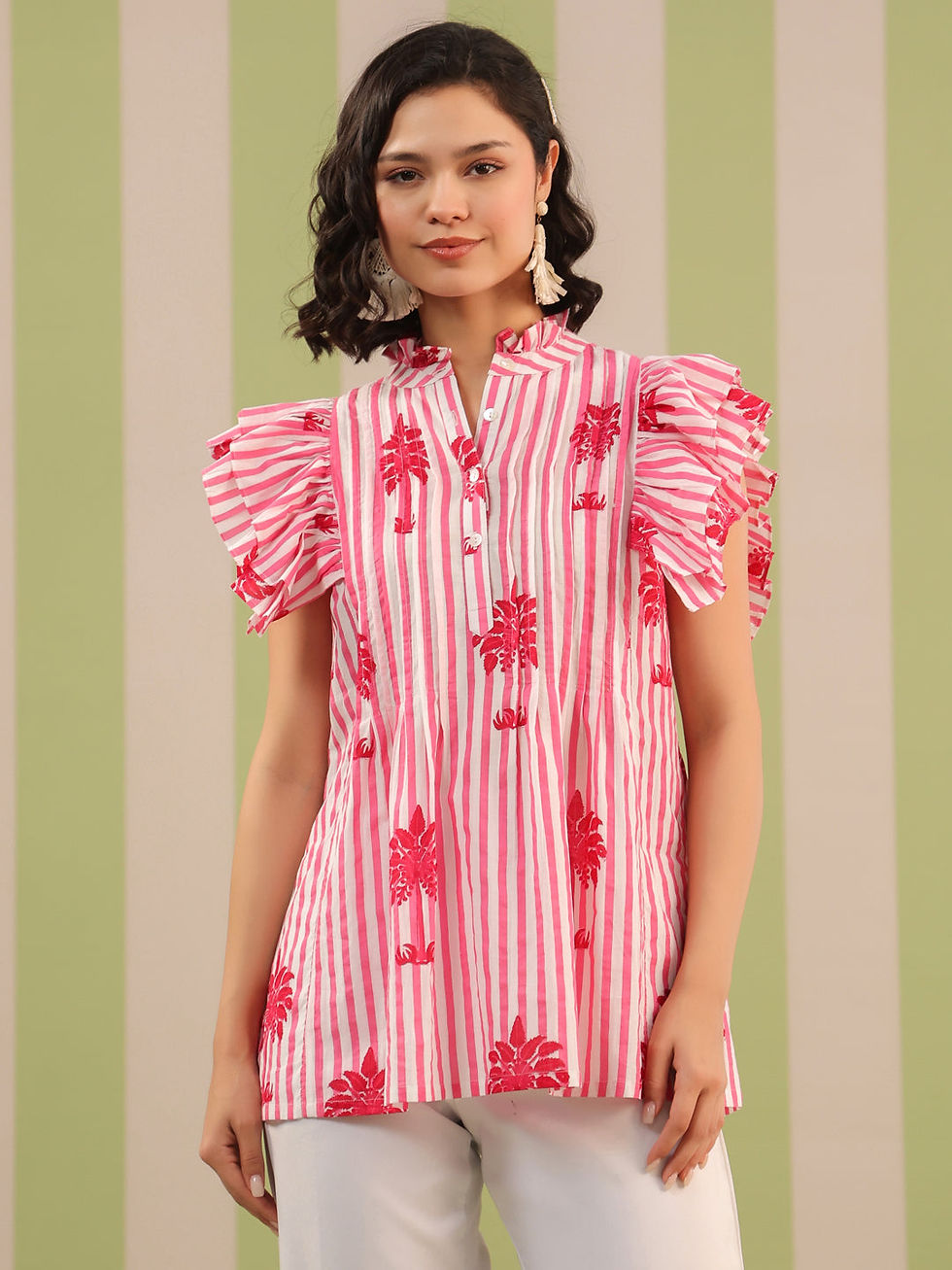What is a Jaipuri Kurta and How does it Represent Rajasthani Cultural Heritage
- mornijaipur
- Jun 3
- 3 min read

When we talk about Indian ethnic put on that superbly blends tradition, professional craftsmanship, and colorful cultural expression, the Jaipuri kurta emerges as a certainly iconic and timeless garment. Known for its complicated detailing, shiny colors, and deep-rooted connection to Rajasthan's artistic heritage, this traditional apparel is much more than in reality a piece of clothing; it's far an image of identity and pride. Crafted using centuries-old strategies, which include hand block printing and natural dyeing, the Jaipuri kurta captures the soul of Indian artistry. But what is Jaipuri kurta, exactly, and what makes it such a large and celebrated part of Rajasthani culture and fashion history?
What is a Jaipuri Kurta?
Jaipuri kurta is a traditional garment tunic style described and identified by tricky hand block prints, colors and lightweight breezy cotton or silk fabrics. The kurtas come from Jaipur, the capital city of Rajasthan, and embody centuries-old skills of artisans that came down over generations.
A Jaipuri kurta is available for women, and traditionally there is women and men kurta, and features works describing different regions of Rajasthan including Sanganeri prints, Bagru designs, and mirror work all of which capture the inspiriting cultural history of the region. Jaipuri kurtas are not just garments but are wearable works of art representing the identity of Rajasthan.
Representation of Rajasthani Cultural Heritage
Rajasthan, notoriously recognized as “The Land of Kings”, is synonymous with royal palaces, people's music, and colourful textiles. The Jaipuri kurta is a textile representation of that royal and colourful legacy. Here are ways it encapsulates and represents this regional heritage:
Traditional Craftsmanship: Hand block printing and dyeing strategies like Dabu and Bandhani are integral to Jaipuri kurta designs. These age-vintage strategies showcase the dedication and artistry of Rajasthani craftsmen.
Cultural Symbolism: The motifs and patterns ranging from floral vines to peacocks are inspired through local traditions, myths, and herbal elements, making every piece culturally significant.
Colorful Aesthetic: Rajasthan arid landscape is contrasted with the bright hues of its clothing. Jaipuri kurtas frequently use striking mixtures like indigo and white or pink and yellow, reflecting the state's lively spirit and festive nature.
Sustainable Fashion: The use of handwork and natural dyes on Jaipuri kurtas form part of an initial design ethos that prioritizes the environment as a contemporary style choice while respecting ancient traditional methods.
Where to Find Authentic Jaipuri Kurtas
Finding genuine Jaipuri kurtas that capture the soul of Rajasthani tradition may be a task in case you do not know where to look. Thankfully, It gives a top-class and thoughtfully curated series of Jaipuri kurta sets for women who feel elegance, tradition, and authenticity. Their designs fantastically mix traditional prints with modern silhouettes, making them best for festive wear, informal outings, or maybe workwear. You can explore their complete range online at Jaipur Morni Kurta Sets, where quality craftsmanship meets undying heritage.
Final Thoughts
So, what is Jaipuri kurta? It's more than just a fashion item, it is a reflection of Rajasthan colourful history, artistic legacy, and cultural pride. Wearing a Jaipuri kurta manner wearing a piece of India's rich fabric tradition, lovingly crafted through generations. With brands like Jaipur Morni keeping and promoting those traditional designs, you now no longer simply put on something stunning, but additionally support authentic craftsmanship. Whether you're attending a cultural event, celebrating a festival, or truly improving your everyday wardrobe, a Jaipuri kurta provides grace, character, and meaning for your fashion. Embrace the heritage with us, and allow your clothes dresser to inform a timeless tale rooted in centuries of artistry and culture.



Comments